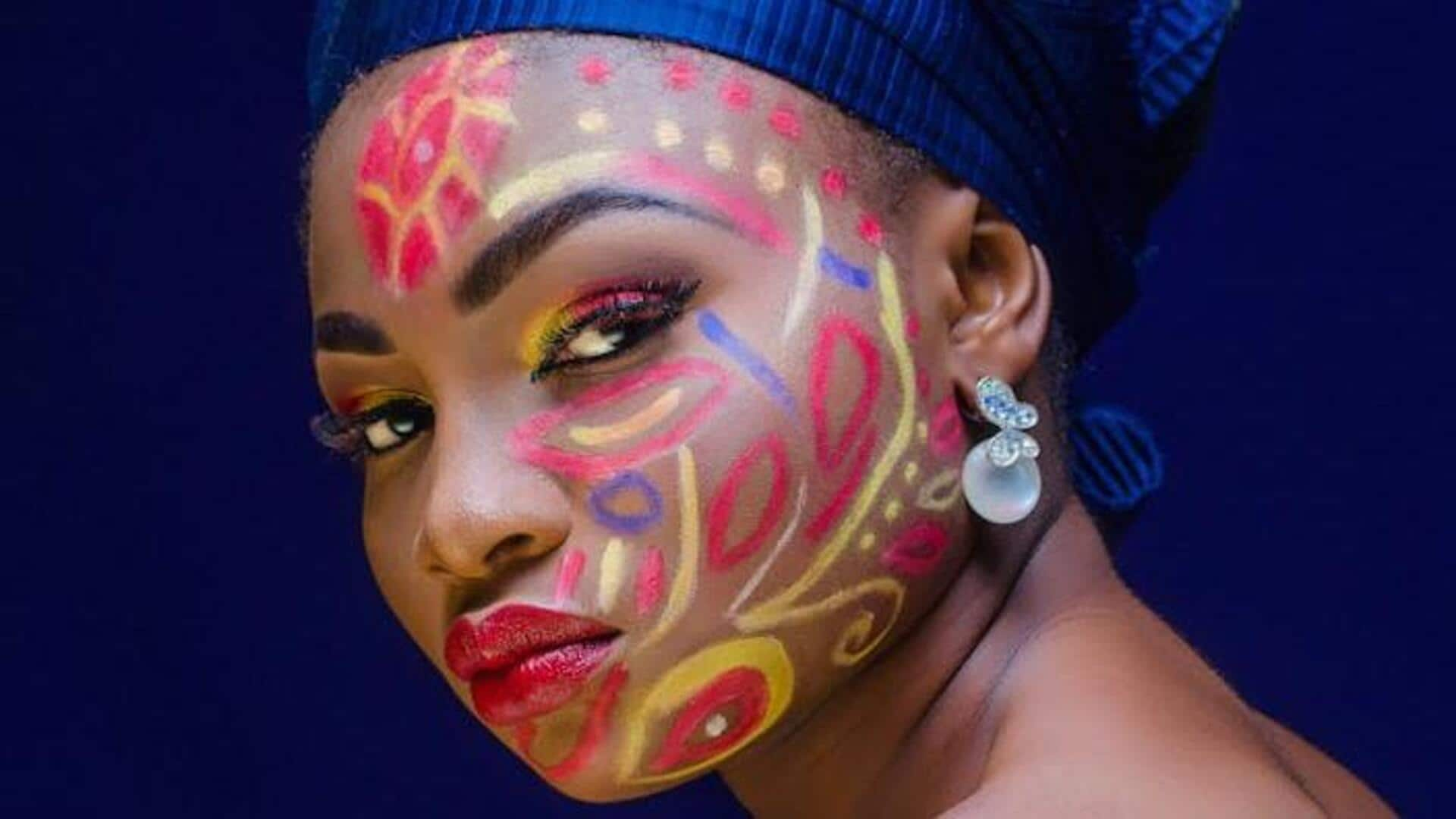
The colorful tradition of African face painting artistry
What's the story
African face painting is a dynamic and significant aspect of the continent's cultural heritage. It holds profound traditional importance, used for various purposes ranging from rites of passage to symbols of status and identity within communities. Artists use natural pigments to create complex and symbolic designs on the canvas of the human face. These works of art reflect the rich diversity and artistic creativity inherent across the African continent.
History
Historical significance and symbolism
African face painting has a rich history spanning thousands of years, with ancient rock art serving as testament to this early form of expression. These initial forays into face painting held profound spiritual and cultural importance. Different patterns and colors were used to indicate one's place in society, marital status, or accomplishments. For example, white is used to represent peace and purity, while red indicates tension or adulthood.
Materials
Materials used in traditional face painting
The materials used for face painting are sourced directly from nature. Charcoal, clay, plant extracts, and mineral ores are ground into powders to form a vibrant palette of colors. This not only anchors the practice in nature but also ensures the tradition's sustainability without environmental harm or dependence on synthetic products.
Modernity
The role of face painting in modern times
Although the conventional roles of face painting are still preserved in various communities, this art form has transcended its traditional boundaries and found new expressions in modern African society. Today, it is a common sight at festivals, weddings, and national celebrations, serving as a proud proclamation of cultural identity. Additionally, it has achieved international acclaim through fashion shows and global art exhibitions, where African artists proudly display their rich heritage.
Learning
Learning from African face painting artistry
For artists interested in studying or integrating African face painting into their own practice, it's crucial to do so with respect and understanding of its cultural context. Each design carries a story or significance within its community, and recognizing this fosters appreciation and respect for the tradition. Working with natural materials as traditionally used can reveal unexpected textures and hues, providing a unique palette that commercial paints can't easily imitate.
Tips
Tips for aspiring artists
Budding artists should study different African cultures to understand the vast diversity of this art form. Drawing symmetrical patterns freehand is a great way to build skill, as balance and proportion are crucial. Immersing yourself in communities or with experienced artists in traditional face painting provides a profound understanding of both the craft's techniques and its significance.